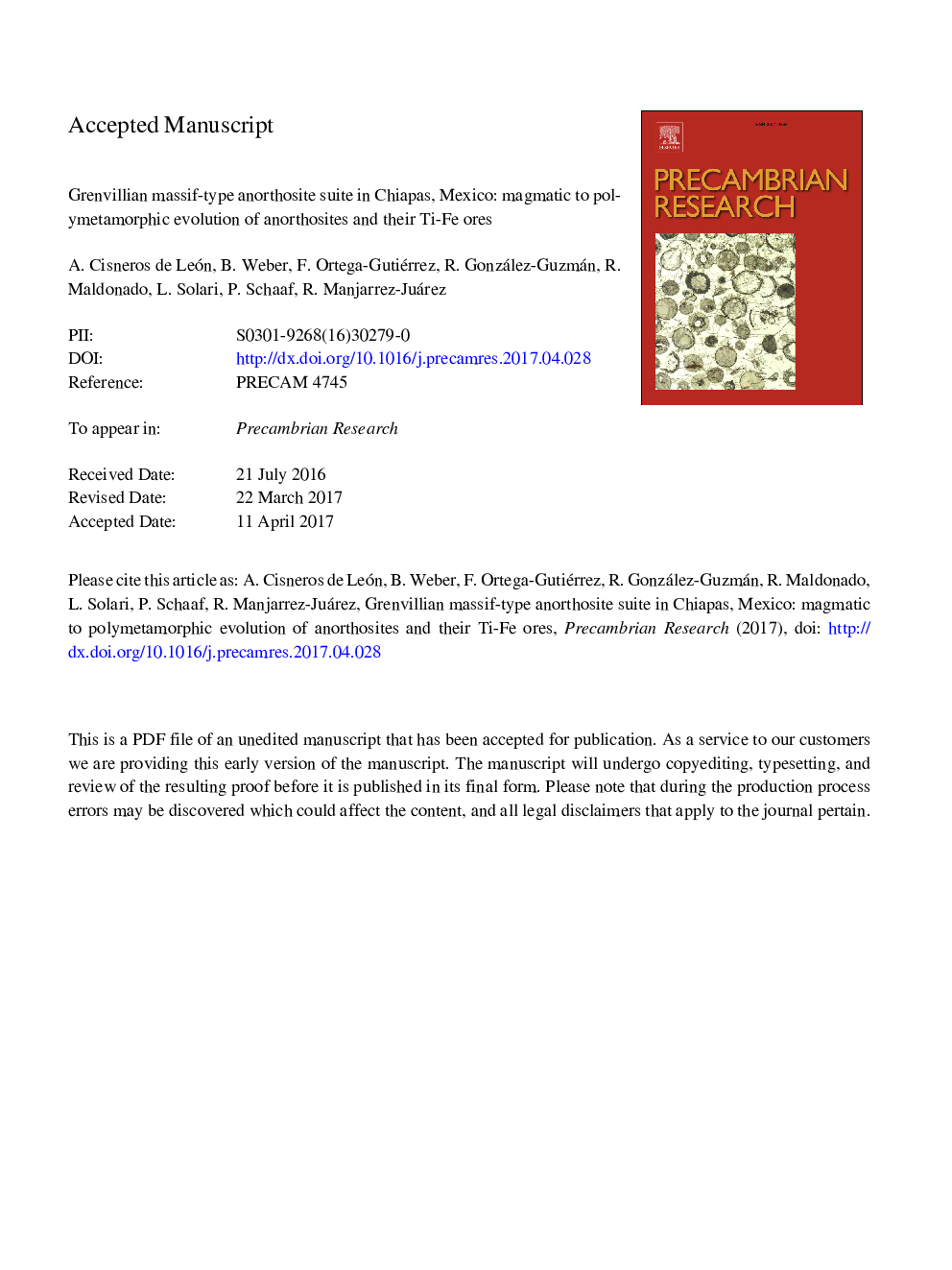| کد مقاله | کد نشریه | سال انتشار | مقاله انگلیسی | نسخه تمام متن |
|---|---|---|---|---|
| 5784833 | 1639580 | 2017 | 74 صفحه PDF | دانلود رایگان |
عنوان انگلیسی مقاله ISI
Grenvillian massif-type anorthosite suite in Chiapas, Mexico: Magmatic to polymetamorphic evolution of anorthosites and their Ti-Fe ores
دانلود مقاله + سفارش ترجمه
دانلود مقاله ISI انگلیسی
رایگان برای ایرانیان
موضوعات مرتبط
مهندسی و علوم پایه
علوم زمین و سیارات
ژئوشیمی و پترولوژی
پیش نمایش صفحه اول مقاله

چکیده انگلیسی
Two meta-anorthosite inliers (â¼20 km2 each) were discovered on each side of the Polochic-Tonalá fault system within the Chiapas Massif Complex (CMC) in southeastern Mexico. The anorthosites occur commonly associated to subordinate hornblendite, rutile-bearing ilmenitite, oxide-apatite-rich amphibolite and nelsonite. An absolute crystallization age for the anorthosite could not be precisely constrained due to the paucity and apparent resetting of the magmatic zircon. However, they are interpreted as remnants of a Proterozoic massif-type anorthosite complex older than 909 ± 27 Ma as suggested by U-Pb data and the striking geochemical similitudes (major, trace and REE, Sr-Nd isotopes; TDM = 1.39-1.45 Ga) to Stenian-Tonian massif-type anorthosites found elsewhere. A complex tectono-thermal history for the anorthosite suite is inferred from the discovery of abundant metamorphic zircon in all samples. Ubiquitous petrographic evidence suggests formation of secondary zircon from reactions involving baddeleyite and srilankite (ZrTi2O6) breakdown at different stages of the anorthosite suite evolution. Two generations of baddeleyite are recognized: (1) exsolution from igneous ilmenite and högbomite ([Mg,Fe2+]2[Al,Ti]5O10) during cooling, and (2) exsolution product from metamorphic rutile and högbomite during retrogression. U-Pb zircon data (LA-MC-ICPMS) of three comagmatic rocks, including one anorthosite sample, reflect the complex polymetamorphic nature observed in the petrographical evidence; concordant to sub-concordant ages spread in a range from â¼909 Ma to â¼242 Ma. Most U-Pb ages cluster around known regional metamorphic events at â450 Ma and â250 Ma. In addition, an age cluster at â¼600 Ma suggests a Neoproterozoic event, interpreted in terms of reheating of anorthosite during mafic intrusions associated to intra-plate rifting.
ناشر
Database: Elsevier - ScienceDirect (ساینس دایرکت)
Journal: Precambrian Research - Volume 295, July 2017, Pages 203-226
Journal: Precambrian Research - Volume 295, July 2017, Pages 203-226
نویسندگان
A. Cisneros de León, B. Weber, F. Ortega-Gutiérrez, R. González-Guzmán, R. Maldonado, L. Solari, P. Schaaf, R. Manjarrez-Juárez,